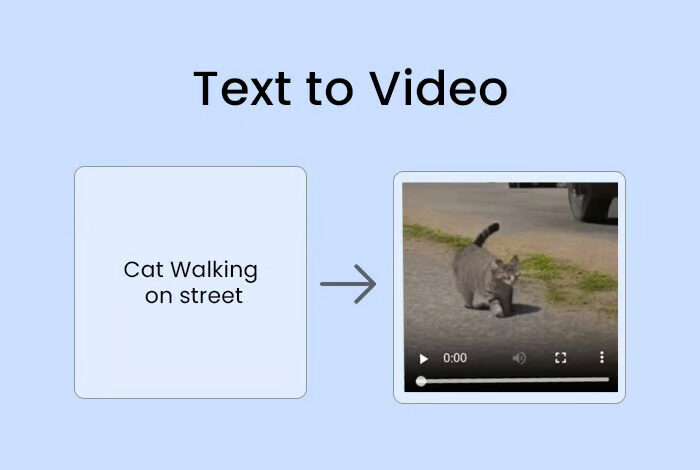Is AI Text-to-Video Capable of Replacing Human Voiceovers in Videos?

In marketing, education, entertainment, and corporate communication, the need for premium video material keeps growing. Many authors are now turning to text to video tools powered by artificial intelligence including voiceovers as a result of this change. These platforms guarantee quick, inexpensive means of converting scenarios into video packed with visuals, narration, and animations. But can AI-generated voices truly match or surpass human voiceovers in quality, genuineness, and emotional effect?
The context, audience, and expectations of the video being made will mostly determine the answer. Although text to video systems have improved considerably in voice synthesis, certain important variances still affect how well-made artificial voiceovers really are.
Growing Artificial Intelligence Voice Technology Sophistication
The development of artificial voice technology is among the most amazing features of text to video platforms. Early artificial intelligence voiceovers lacked emotional variety and sounded mechanical. Many AI tools offer natural-sounding voices nowadays that may modify pitch, speed, emphasis, and tone to more perfectly fit the material.
AI-generated voiceovers can now imitate regional dialects, gender differences, and even particular vocal techniques such corporate, casual, or academic tones. Some text to video programs let consumers fine-tune delivery to a level before unattainable without professional voice actors thanks to neural text-to-speech models. This degree of development makes AI-produced voices appropriate for a wide range of uses, especially where consistency and speed are paramount.
Use Cases Where AI Voiceovers Perform Excellent
Many instances call for great performance from text to video tools featuring AI voiceovers. For example, educational portals profit much from rapid video production. A course developer can upload a script, select an AI voice, and automatically produce a complete lesson free from hiring voice talent or investing hours in audio recording and editing.
Text to video is sometimes used in marketing to generate product explainers, social media commercials, and customer onboarding videos. Usually putting clarity and delivery speed ahead emotional depth, these formats make AI voiceovers more than enough.
AI narration also benefits customer service content like FAQs or internal training videos. For these situations, which synthetic voices may now manage dependably, the emphasis is on precise and clear distribution of information.
AI-Generated Voiceover Restrictions
Though there are these developments, text to video technology still has drawbacks when it comes to voiceovers. Human voice performers add delicate subtleties to a performance—intonation, emotion, timing—that artificial intelligence still finds difficult to accurately reproduce.
Human narrative is still best for videos meant to evoke strong feelings, tell stories, or create a strong personal connection. A voice actor can communicate warmth, excitement, irritation, or empathy in a way that feels real. When pushed beyond informational delivery, artificial intelligence can appear flat or very automated.
One also has the matter of originality. A brand trying to develop a unique voice may view artificial intelligence-generated narration as rather bland. Although artificial intelligence systems provide several vocal choices, those voices are sometimes shared across many companies and consumers, therefore reducing branding uniqueness.
Context and Cultural Sensitivity
Understanding cultural context and linguistic subtleties presents yet another difficulty for text-to-video artificial intelligence voiceovers. Although artificial intelligence can say words in several languages and accents, it may mistake idioms, sarcasm, or emotionally charged statements. This can result in embarrassing or improper deliveries, especially in worldwide initiatives where tone sensitivity is critical.
Human narrators—particularly native speakers—are better able to deal with these nuances and tailor their performance to meet the intended audience. This makes them a better option for material that must connect on a greater cultural or emotional level.
Considerations of Budget, Scale, and Time
Efficiency is one of the best reasons for using text to video tools with AI voiceovers. Manually creating hundreds of videos particularly for product updates, local content, or training material may be incredibly expensive and time-consuming. AI voiceovers remove the need of booking talent, managing studio time, or waiting on post-production.
Text to video solutions provide a means for startups, small businesses, and individual creators to compete in the content scene without hiring full teams. For certain types of content, the trade-off in emotional depth may be worth the gain in speed and scalability.
Blended Approaches for Maximum Impact
A growing number of content creators use hybrid strategies—combining text to video tools with occasional human voiceovers when needed. For example, a brand might use AI voiceovers for routine updates or instructional content, but hire a human narrator for flagship marketing campaigns or emotionally charged stories.
This approach allows teams to benefit from the speed and affordability of AI while still delivering high-quality, engaging voiceovers where they matter most. Many text to video platforms even support uploading custom voice recordings, offering the flexibility to switch between AI and human narration based on the project.
Conclusion
The quality and accessibility of AI-generated voiceovers have been greatly enhanced by text-to-video technology. Many applications, especially those needing efficiency, clarity, and scalability, find great suitability of artificial voiceovers. Still, human voice actors give unrivaled genuineness when material calls for emotional expression, storytelling, or cultural subtleties.
Ultimately, it is doubtful that text-to-video solutions will completely replace human voiceovers in all applications. They are already changing the content creation environment, hence facilitating quicker output, greater reach, and reduced expenses. The best content strategies will be aware of the areas where the human touch is still most important and where artificial intelligence can bring value.



